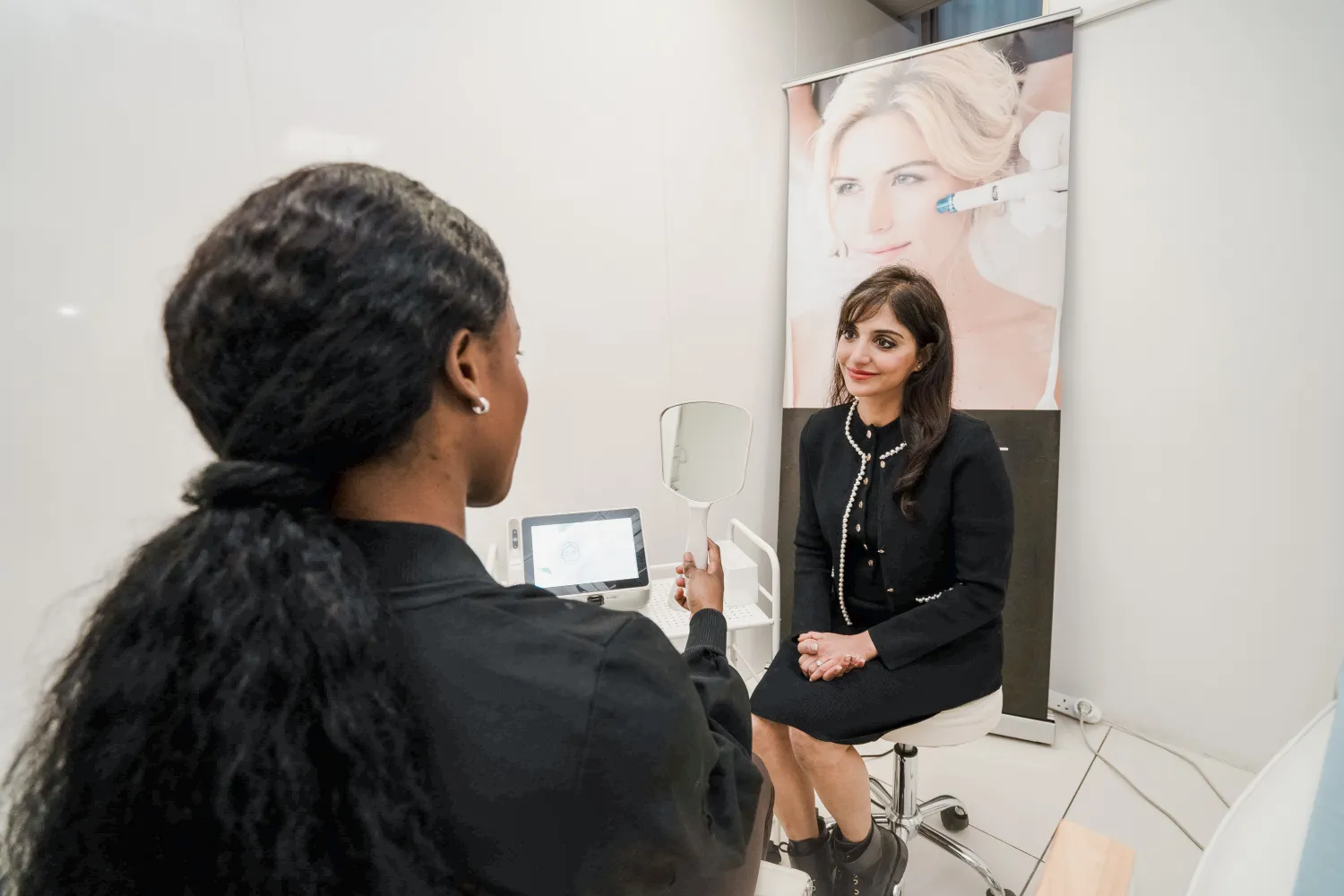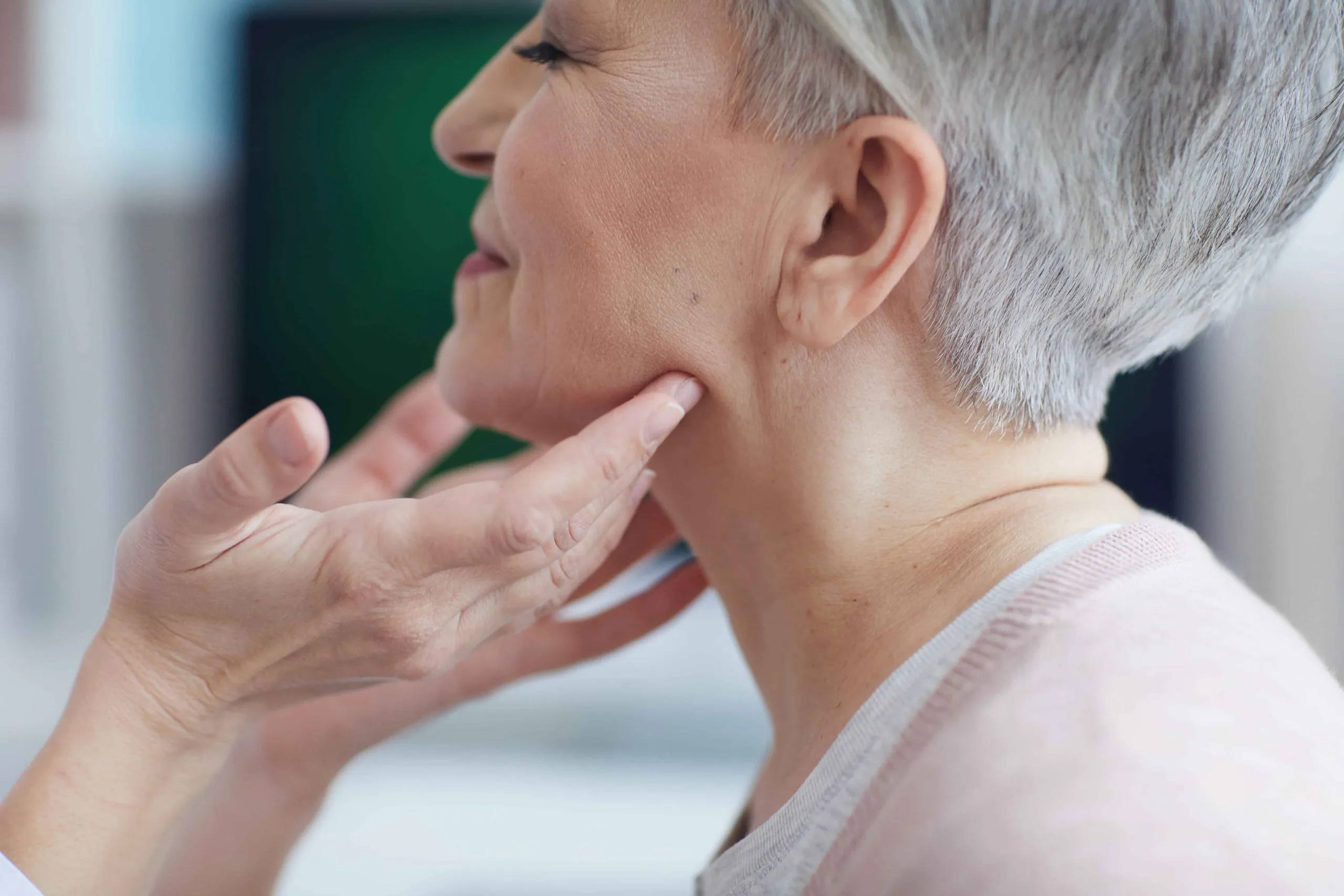A dorsal hump refers to a prominent ridge along the bridge of the nose. Some individuals are naturally predisposed to it, while others may acquire it gradually over time. While it is harmless, it can affect how your face looks and how you feel about your appearance. For some, it runs in the family. For others, it may result from an injury or natural changes in the body.
Whether you are curious about its causes or considering treatments to enhance your profile, understanding it is helpful. This guide explains what a dorsal hump is, its causes, and the ways it can be treated through both surgical & non-surgical options.
What is a Dorsal Hump?
A dorsal hump is a raised bump on the bridge of the nose, made up of bone, cartilage, or both. It typically isn’t visible from the front but stands out clearly from a side profile. The hump usually starts near the top of the nose, close to the eyes, and extends down toward the tip.
Some people are born with it, while others develop it later due to injury or trauma. In some cases, the bump may appear more on one side of the nose, making it visible even from the front.
While it doesn’t cause medical problems, many people choose to smooth out a dorsal hump for cosmetic reasons, aiming for a more balanced and straight nasal shape.
Causes of Nose Bumps
Dorsal humps can show up for a number of reasons. Here’s an overview of the primary causes:
1. Genetics
This is the most common reason for dorsal humps. Many people inherit the shape and structure of their nose, including bumps on the bridge. If one or both parents have a dorsal hump, it’s likely to run in the family.
2. Injuries or Trauma
A broken or injured nose may heal unevenly, especially if the bone or cartilage shifts during the healing process. Even minor injuries that weren’t treated properly at the time can lead to a permanent bump.
3. Excess Bone or Cartilage Growth
Sometimes, the body simply produces more bone or cartilage than needed in the nasal bridge area. This can create a noticeable bump, often becoming more apparent during puberty or early adulthood.
4. Nasal Polyps
Large polyps are usually found in the nasal passages, but they can sometimes cause a noticeable bulge or pressure on the outside of the nose. These growths are benign, meaning they are not harmful, and are often related to chronic inflammation or allergies.
5. Skin Cancer
Certain types of skin cancer, like basal cell carcinoma or squamous cell carcinoma, can appear as bumps on or around the nose. These bumps may grow slowly, change in colour, or bleed, and should always be evaluated by a dermatologist.
6. Boils
Painful bumps filled with pus on the nose are called boils. They usually happen because of a staph infection. Boils can develop around hair follicles or in clogged pores. They may need drainage or antibiotics to treat them.
7. Folliculitis
This is an infection or inflammation of hair follicles, often caused by bacteria. It can lead to red, tender bumps on the surface of the nose, especially in areas where oil and sweat collect.
8. Perioral Dermatitis
Although it mainly affects the area around the mouth, this rash-like condition can also cause clusters of red bumps near the nose. Topical steroids, harsh skincare products, or hormonal changes sometimes trigger it.
9. Sebaceous Gland Hyperplasia
This harmless skin condition causes small, soft, yellowish bumps, usually due to enlarged oil glands. It tends to show up more frequently in adults with oily skin and is usually a cosmetic concern.

Book your personalised consultation with our expert team
- Advanced non-surgical aesthetic treatments for face and body
- Personalised treatment plan created using our cutting-edge OBSERV Face Scan
- Led by experienced doctors with a "Safety First" approach
Symptoms of Dorsal Humps
While a dorsal hump is mainly a cosmetic feature, certain signs may come along with it, especially if it developed due to trauma or an underlying condition. Here’s what people often notice:
- Swelling around the nose.
- Pain or discomfort inside the nostril.
- Redness on or around the nose.
- Tenderness when touching the nose.
- A sensation that something feels off or foreign in the nose.
- Uneven or asymmetrical nose shape.
- Curved or hooked appearance from the side.
- Visible bump on the bridge of the nose.
- Self-consciousness or emotional discomfort related to appearance.
Dorsal Hump Removal Before and After



Treatment Options for a Dorsal Hump
If you want to change the shape of your nose or smooth out a bump, you have options. You can choose either surgical or non-surgical methods. Each option has its own benefits, recovery time, and how long the results last.
Open Rhinoplasty
Open rhinoplasty is the most frequently used surgical technique for the permanent removal of a dorsal hump. The procedure is performed under general anaesthesia. Throughout the operation, the surgeon creates a tiny incision at the bottom of the nose to gain complete access to the underlying bone and cartilage.
The surgeon then reshapes the nose by trimming or sanding down the hump. In some cases, the nasal bones may need to be broken and repositioned to create a smoother, more balanced profile.
After surgery, a splint or cast is placed on the nose to support healing. Most people wear it for about a week. Swelling and bruising are common, and full recovery typically takes around three weeks.
Closed Rhinoplasty
In closed rhinoplasty, all the work is done through incisions inside the nostrils, so there are no visible scars. This approach also uses general anaesthesia.
The surgeon adjusts the bone and cartilage through these internal openings to correct the shape of the nose. Closed rhinoplasty generally involves less swelling and bruising, and most people recover within one to two weeks.
In both open and closed techniques, bone reshaping may involve controlled fractures to realign the nasal structure. These breaks are the main reason for post-op swelling and bruising.
After either procedure, a metal or plaster splint is usually applied to help the bones heal in the right position.
Non-Surgical Rhinoplasty (Liquid Rhinoplasty)
Liquid rhinoplasty is a non-invasive option that uses dermal fillers to improve the appearance of the nose. It’s done with topical anaesthesia and usually takes about 30 minutes.
Rather than removing the dorsal hump, the filler is injected around it to smooth out the bridge and create the look of a straight profile. The results are temporary, lasting anywhere from 6 months to 2 years.

Discover what's possible with our expert team
- Over 20 years of combined experience in aesthetic medicine
- A "Safety First" approach at the core of all our treatments
- Bespoke treatment plans tailored to your unique goals
This option is more affordable than surgery, has minimal risks, and doesn’t require downtime. Most people return to normal activities immediately.
Do Dorsal Humps Affect Breathing?
In most cases, dorsal humps don’t interfere with breathing. Unlike a deviated septum, which can block airflow and change the shape of the nose, a dorsal hump is an external feature made of bone or cartilage along the bridge. It may change the appearance of the nose, but it typically doesn’t affect how well you breathe.
If the hump developed due to an injury, the septum might also be damaged. In that situation, breathing issues could occur, but they’re caused by the internal structure, not the hump itself.
Removing a dorsal hump from your nose is a personal choice. You only need to do it if you are not happy with how your nose looks and want to change its shape.
Final Thoughts
Many people want to change a dorsal hump on their nose. They do this not because it causes harm, but because it affects their facial profile and confidence. Whether you were born with it or developed it after an injury, you’ve got options.
Surgery offers a permanent solution, while filler-based approaches are less invasive but temporary. If the hump doesn’t bother you, there’s no medical reason to treat it. What matters most is how you feel about it.
Frequently Asked Questions
You can remove it permanently with surgical rhinoplasty (open or closed). If you prefer a temporary fix, non-surgical options like dermal fillers can smooth the bump without surgery.
Bumps caused by bone or cartilage, like dorsal humps, are permanent unless treated. But small skin bumps like fibrous papules can shrink or disappear over time.
No, dorsal humps don’t go away naturally. Since they involve bone and cartilage, treatment is needed to remove or reshape them.
Most are caused by clogged pores, ingrown hairs, or minor infections. In some cases, they may be a sign of something more serious and should be checked by a doctor.
Most people can go back to work in about a week, though full healing may take a few weeks, depending on the type of procedure.






